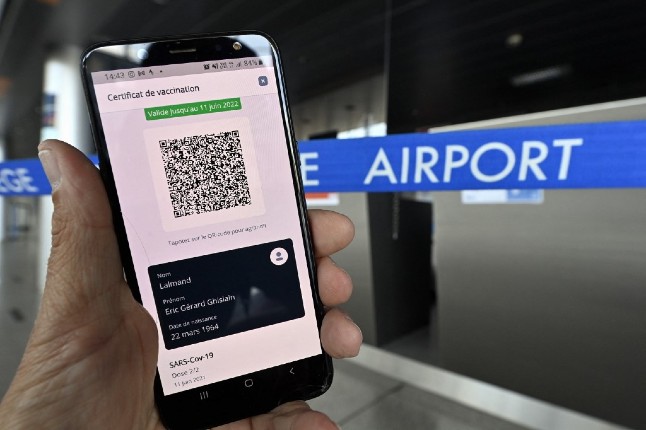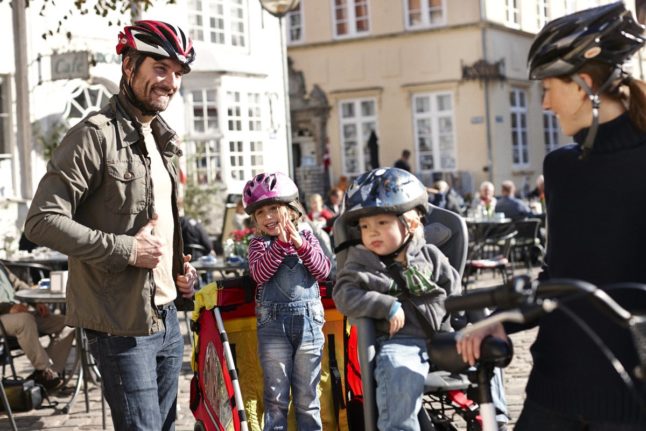How can I get a EU Covid travel certificate?
Anyone who has downloaded the Danish coronapas app and had it validated with a test or vaccination can switch it to “foreign travel mode” by clicking on the pass icon at the top right of the screen.
A question pops up saying “where will you use the pass?”, and if you click “overseas travel” or utlandsrejse.
The app will generate a new QR code that is compatible with European standards and can communicate with readers and technology developed for the same purpose in other EU countries. It will also automatically apply the different criteria required for EU travel.
You can see how to switch on this video below. It’s in Danish, but it shows how to toggle between the Danish and EU pass. (thanks to Frederiksberg Library).
You can swipe up the pass to show on what basis you have a valid EU Covid travel certificate.
READ ALSO:
- How does the new EU Covid certificate work and how do I get one?
- What tourists need to know about Denmark’s coronapas system
- Denmark launches new corona passport: Here’s what you need to know about ‘Coronapas’ app
How do I know if my EU Covid travel certificate is valid where I’m going?
Unfortunately, unlike the Danish coronapas, when you switch your app to “overseas travel” mode, the international QR code no longer comes with a big green tick telling you and others that it is valid.
Instead it contains necessary key information such as name, date of birth, date of issuance, relevant information about vaccine/ test/recovery and a unique identifier.
This can then be used by border guards at the country you are entering to check whether you are allowed to enter.
So it is up to you to check that the test, vaccination or immunity status you have is valid.
The Danish foreign ministry has made an excellent pop up map which gives a guide to what the entry requirements are in EU countries.
Is there anything in particular to watch out for?
Some countries, such as Iceland, Ireland, Belgium, The Netherlands, Luxembourg and Slovakia, do not currently accept negative rapid tests for entry. Denmark’s coronapas system only keeps and displays the most recent test you have taken. So if you have taken a rapid test, you have to take a new PCR test before travelling to these countries.
Countries also vary over whether a test result needs to be 48 hours or 72 hours old to be valid.
There are also differences in what the requirements are for a valid vaccination, with Austria, for instance, only accepting that you are fully vaccinated 21 days after your final dose, compared to 14 days in Denmark.
In Italy, you are considered vaccinated 14 days after just your first dose, and in Austria 22 days after it.
Finally, there are differences in how long you have to wait after a positive PCR test to be considered immune.
Do I need an EU Covid travel certificate to travel?
No. You generally just need proof of a negative Covid-19 test, vaccination, or recovery from a Covid-19 infection. Some countries do not even require that. The Covid travel certificate is intended to make proving this easier and faster.
Can I print out my EU Covid travel certificate?
Yes, and the Danish health authorities recommend that you do so, in case you lose your phone, or it runs out of batteries at crucial moments. You should be able to print the document directly from your smartphone, or else take a screenshot and save it as a PDF, which you can send to your computer for printing.
Can I use an EU Covid travel certificate in the same way as a coronapas to enter cafés etc?
On July 1st, the certificate is only being launched for travel and border control, but the EU is encouraging member states to also accept each other’s corona passes for domestic use.
Denmark already allows travellers from other EU countries to use the EU Covid travel certificate in the same way as a Danish coronapas.
But it is quite unclear how many other countries are doing this. France, for example, insists on people having a French pass for access to nightclubs, festivals etc.
What happens if your EU Covid travel certificate stops being valid while you are abroad?
If your certificate is valid on the basis of a negative test, it is likely to stop being valid while you are abroad. If you are in a “green” or “yellow” EU country and are only travelling back to Denmark, then this shouldn’t be a problem, as you will not need a test to return home.
If, however, you want to travel onwards to another country, you may need to take a test in another EU country. Test centres internationally should then be able to issue you with an EU Covid travel certificate, either on paper or digitally.
What is Denmark’s coronapas?
Denmark’s coronapas is a digital document showing that the holder is vaccinated, previously infected (immune) or has tested negative for Covid-19 within the past 72 hours.
It can be accessed either the pre-existing MinSundhed app, which has been used as a platform for corona passports since March, or through the dedicated coronapas app launched at the end of May.
Unlike the old app, Coronapas gives access to a page which shows a QR code with a green banner if the passport is valid.
How do I get a coronapas?
You can download the coronapas app from either the Apple app store or from Google Play. It can be installed on Android phones with operating system Android 5 or higher and iPhones with operating system iOS 9 or higher.
To log into the app, you need to have NemID, the Danish digital ID system.
To get a NemID, you need to have a Danish CPR number, and to get a Danish CPR number you need to get a registration certificate at one of Denmark’s International Citizen Service centres.



 Please whitelist us to continue reading.
Please whitelist us to continue reading.
Member comments